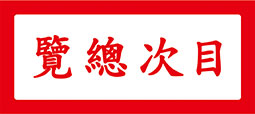「展覽推介」,何廣棪教授撰
松濤社-我愛國旗委員會謹訂於中華民國一百零八年八月三日至十八日,假國立台灣師範大學藝術中心德群畫廊舉辦「中華文化之滅絕與復興-民國三十八年至六十五年列傳初編文物展覽」。
參展之文物可謂百家齊備,參展者計有政治家、軍事家、經濟學家暨實業家、儒家領袖、宗教領袖、思想家、政論家、學人、舊文學家、新文學家、書法家、畫家、篆刻家、鑑賞家、戲劇家、古琴宗師、攝影家、太極拳宗師、工程師、建築師、科學家、海外人士,都一百八十餘人。
而參展文物之富,有如百花齊放。以立軸計,則有章草立軸、行書立軸、朱砂甲骨文立軸、山水立軸、梅花立軸、楷書立軸、花卉立軸、隸書立軸、雪竹立軸、奔馬立軸、靈芝立軸、觀音立軸、花果立軸、回文立軸;以楹聯計,則有草書楹聯、行書楹聯、楷書楹聯、篆書楹聯、隸書楹聯;以鏡片計,則有楷書鏡片、行書鏡片、荷花鏡片;以手卷計,則有行書手卷、山水手卷;以橫幅計,則有行書橫幅、藏文橫幅;另如手稿、信箋、金牌、詞箋、攝影照片、名家刻印、演出特刊、錄音唱片、手書符籙、楷書詩幅、冷香山館雅集圖、英文信箋、瑞典國王簽署聖誕卡等,亦玲瑯滿目。上述各類展品,約共一百八十件,其中一百五十件乃宋緒康先生所珍藏,其餘則為其友人所提供。
是次展出文物皆極富歷史文獻與藝術價值,熱烈歡迎篤好者蒞臨欣賞,並賜指導。文物珍貴,機會難逢,凡我同道,盍興乎來!
民國一百零八年八月一日,
香港新亞研究所教授何廣棪敬啟。
「序文」,閔福德教授撰
The brave continuation in the midst of destruction and the potential rebirth, of a great and ancient culture, are indeed weighty themes for an exhibition. It was nearly a hundred years ago, in the autumn of 1920, that the great British philosopher, libertarian and pacifist Bertrand Russell visited China, giving numerous lectures on philosophy, which were interpreted for him into Chinese with great skill by the young polyglot linguist Yuen Ren Chao. Upon his return to England, Russell wrote his book The Problem of China, which was eventually published in 1922. He had visited the Soviet Union briefly in 1920, and was already greatly disillusioned with the Bolshevik brand of totalitarianism. He met with Lenin for an hour and saw through to what he called his “impish cruelty”. His subsequent perceptions of China, and his meditations on its modern fate, today seem deeply prophetic. Here are a few of his words:
“A spirit of patriotism is absolutely necessary to the regeneration of China. Independence is to be sought, not as an end in itself, but as a means towards a new blend of Western skill with the traditional Chinese virtues. If this end is not achieved, political independence will have little value… Out of the renaissance spirit now existing in China, it is possible, if foreign nations can be prevented from working havoc, to develop a new civilization better than any that the world has yet known. This is the aim which Young China should set before itself: the preservation of the urbanity and courtesy, the candour and the pacific temper, which are characteristic of the Chinese nation, together with a knowledge of Western science and an application of it to the practical problems of China… Those who value wisdom or beauty, or even the simple enjoyment of life, will find more of these things in China than in the distracted and turbulent West, and will be happy to live where such things are valued. I wish I could hope that China, in return for our scientific knowledge, may give us something of her large tolerance and contemplative peace of mind. ”
These quotations from one of the twentieth century world's greatest thinkers are a fitting echo of my friend Shu-kong Soong's idealism, of his deep commitment to the preservation of a vision of a China that is both free and wise. This vision of his is evident in this remarkable exhibition of documents, gathered together from a brave array of free spirits, all of whom have this in common: that they believe in the enduring values of perennial China, values which go back to the earliest period of this great civilisation, and are embodied in such immortal texts as the Tao Te Ching (道德經), whose tranquil wisdom, to quote the great scholar Anthony C. Yu (余國藩), “seems ever more compelling and urgent today in a world where offcials of various nations are vying to vaunt their incomparable power”. The continuation and rebirth of this great and splendid civilization, for which this exhibition pleads so eloquently, is a matter of the utmost importance. It is needed not only for China, but for the whole of humanity, indeed for the very survival of our entire planet.
John Minford
Fontmarty, July 2019



